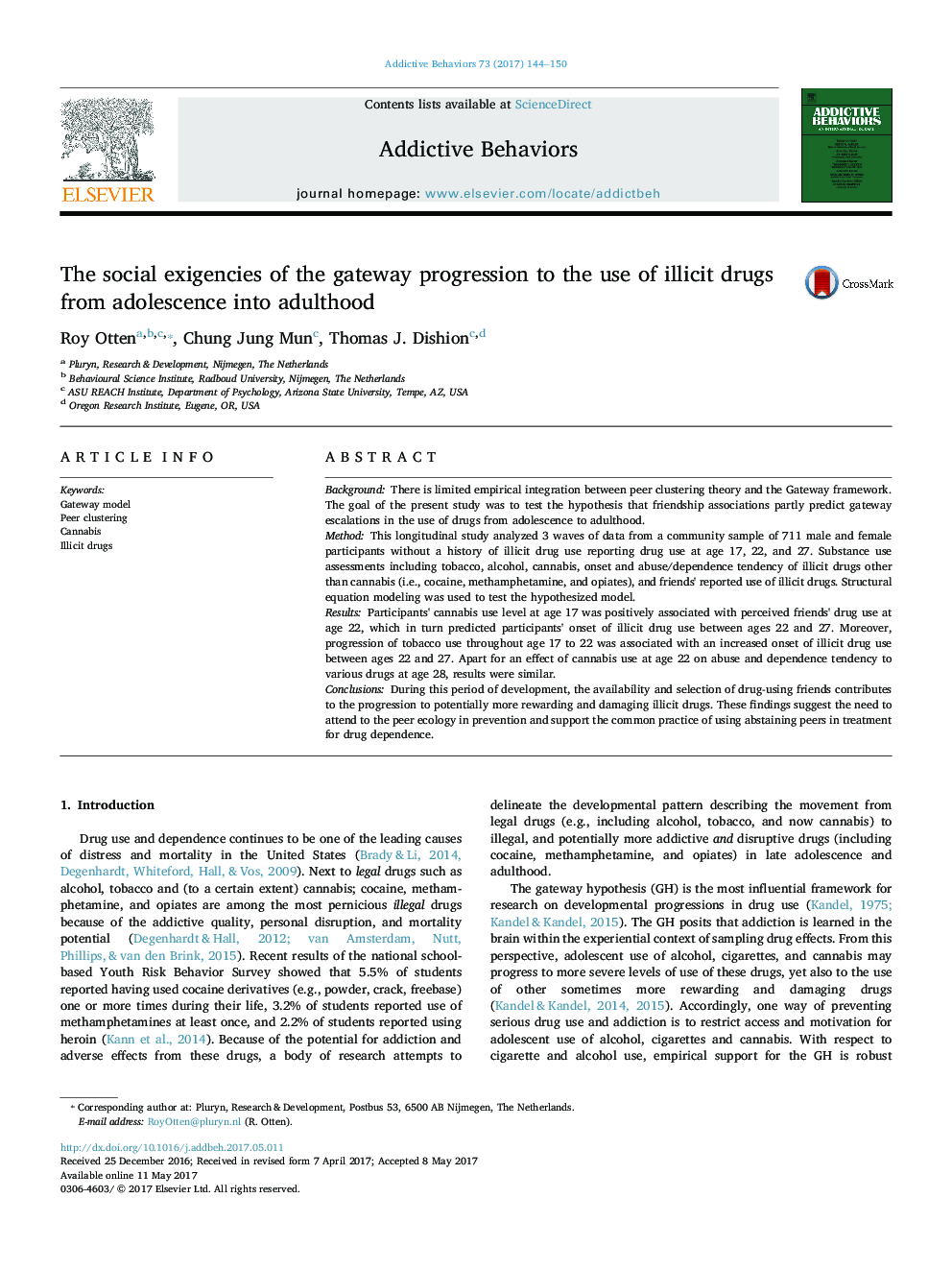| کد مقاله | کد نشریه | سال انتشار | مقاله انگلیسی | نسخه تمام متن |
|---|---|---|---|---|
| 5037571 | 1472498 | 2017 | 7 صفحه PDF | دانلود رایگان |
- The proposed model combines the traditional gateway hypothesis with peer clustering.
- Results show partial support for the traditional gateway drug hypothesis model.
- A second gateway runs through affiliation with peers who use drugs.
- Prevention of illicit drug use could benefit from an integrative approach.
BackgroundThere is limited empirical integration between peer clustering theory and the Gateway framework. The goal of the present study was to test the hypothesis that friendship associations partly predict gateway escalations in the use of drugs from adolescence to adulthood.MethodThis longitudinal study analyzed 3 waves of data from a community sample of 711 male and female participants without a history of illicit drug use reporting drug use at age 17, 22, and 27. Substance use assessments including tobacco, alcohol, cannabis, onset and abuse/dependence tendency of illicit drugs other than cannabis (i.e., cocaine, methamphetamine, and opiates), and friends' reported use of illicit drugs. Structural equation modeling was used to test the hypothesized model.ResultsParticipants' cannabis use level at age 17 was positively associated with perceived friends' drug use at age 22, which in turn predicted participants' onset of illicit drug use between ages 22 and 27. Moreover, progression of tobacco use throughout age 17 to 22 was associated with an increased onset of illicit drug use between ages 22 and 27. Apart for an effect of cannabis use at age 22 on abuse and dependence tendency to various drugs at age 28, results were similar.ConclusionsDuring this period of development, the availability and selection of drug-using friends contributes to the progression to potentially more rewarding and damaging illicit drugs. These findings suggest the need to attend to the peer ecology in prevention and support the common practice of using abstaining peers in treatment for drug dependence.
Journal: Addictive Behaviors - Volume 73, October 2017, Pages 144-150
